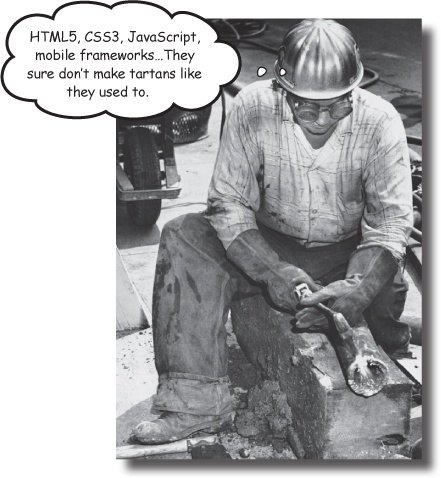Chapter 6. Build a Mobile Web App Using a Framework: The Tartanator

âWe want an app!â Just a year or two ago, that hallmark cry generally meant one thing: native code development and deployment for each platform you wanted to support. But native isnât the only game in town. These days, web-based apps for mobile browsers have some street credâespecially now that hip cat HTML5 and his sidekicks, CSS3 and JavaScript, are in the house. Letâs dip our toes into the mobile web app world by taking a mobile frameworkâcode tools designed to help you get your job done quicklyâfor a spin!

Just like the term Web 2.0 a few years ago, HTML5 and app are the buzzword darlings of media and Internet folks alike.
The terms mean different things to different peopleâa free-wheeling semantic party that can be exhilarating or frustrating.
As a web dev, you may already have eager customers beating down your doors asking for HTML5 and web apps specifically. So, what is it that theyâre really asking for?
HTML5...app...what do these words even mean?
HTML5 is a specific thing...
HTML5 is a specific thing. Itâs an in-progress standard, an evolution of the HTML we know and loveâthe language without which there would be no Web. HTML5 clarifies and improves upon the two-decade-old markup language, ...
Get Head First Mobile Web now with the O’Reilly learning platform.
O’Reilly members experience books, live events, courses curated by job role, and more from O’Reilly and nearly 200 top publishers.

